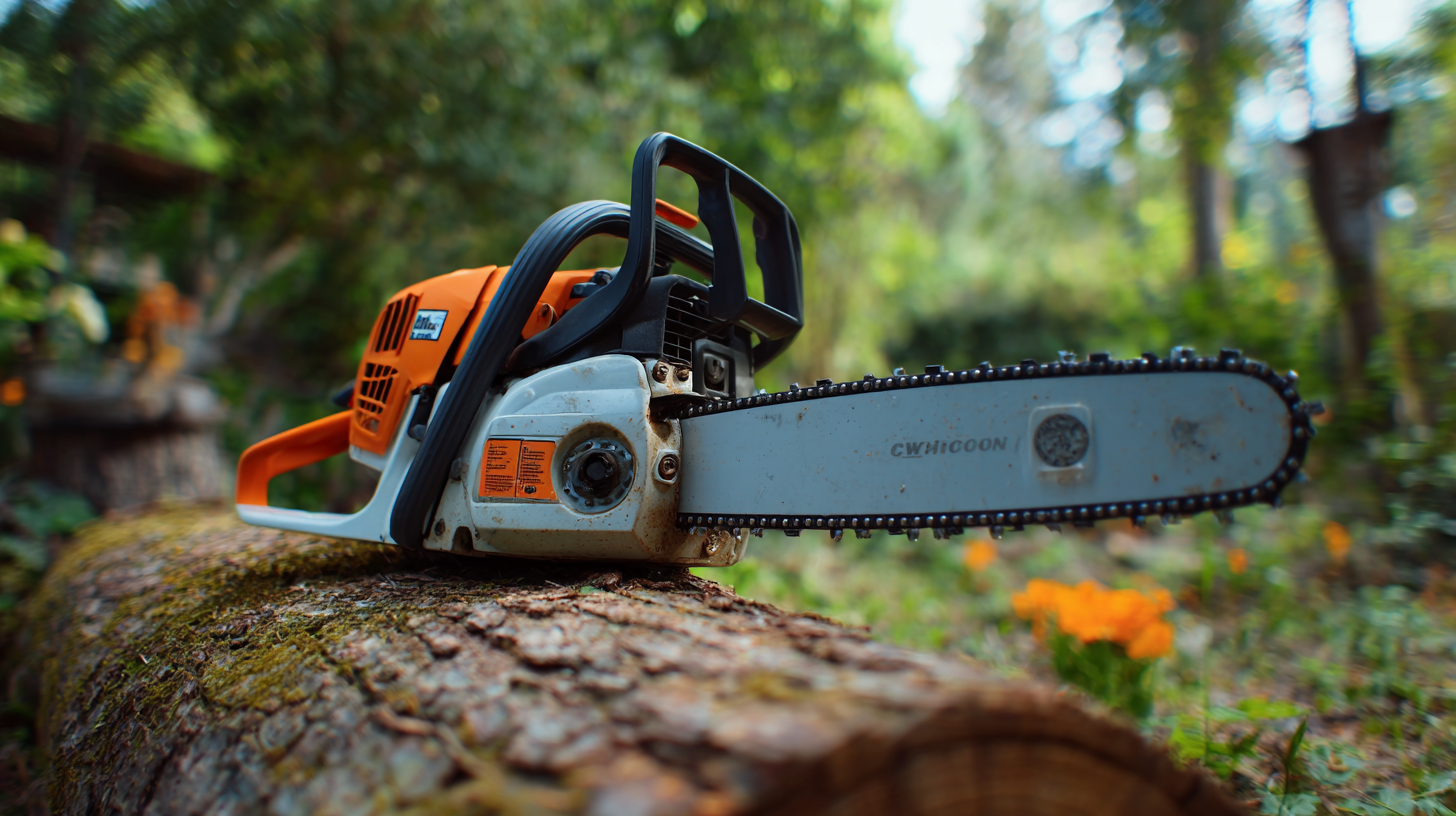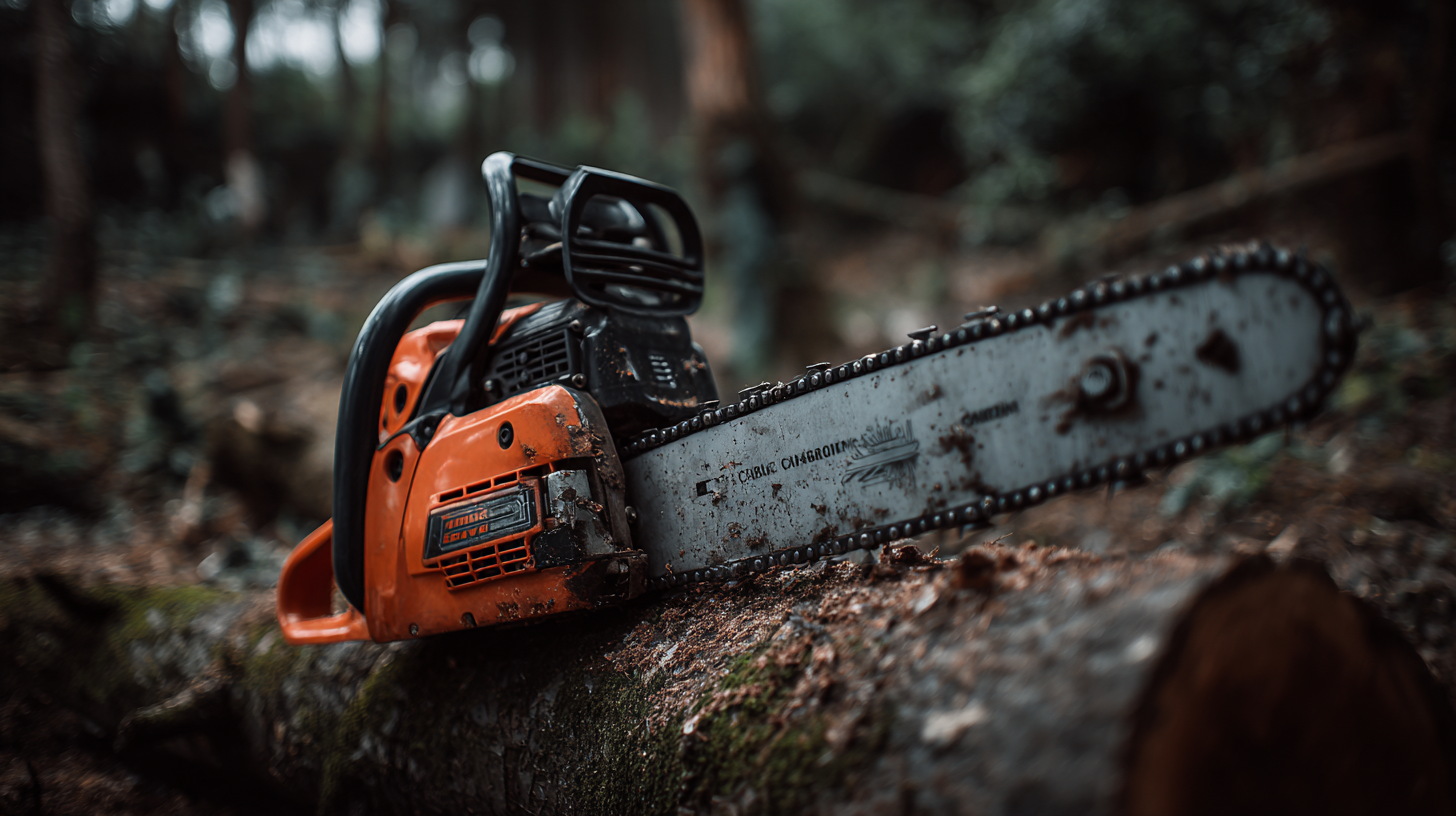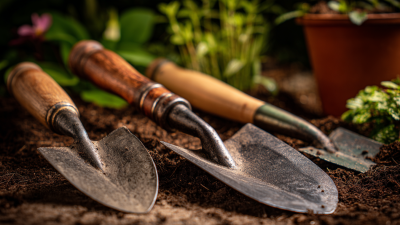Exploring the Ultimate Guide to Choosing the Best Chain Saw for Your Needs
When it comes to selecting the ideal Chain Saw for your requirements, understanding the diverse options and their specifications is paramount. According to a recent industry report by MarketsandMarkets, the global power tools market, which includes Chain Saws, is projected to reach USD 36.95 billion by 2025, growing at a CAGR of 4.6%. This trend highlights the increasing demand for efficient and user-friendly cutting tools in both professional and home improvement sectors. Furthermore, a survey conducted by the American Society of Landscape Architects indicates that approximately 68% of professionals recommend using a high-quality Chain Saw for optimal performance in landscaping and tree care. Thus, navigating through the multitude of features, brands, and technologies available can be daunting, yet it is essential to ensure that you choose the best Chain Saw tailored to your specific needs and ensure safety and effectiveness in your tasks.

Understanding Different Types of Chain Saws: Gas, Electric, and Battery-Powered Options
When it comes to selecting the right chain saw, understanding the different types available is crucial. The three main categories include gas, electric, and battery-powered chain saws, each serving unique needs and preferences. According to a recent report by the Outdoor Power Equipment Institute (OPEI), gas chain saws account for approximately 58% of the market share, primarily due to their power and ability to tackle heavy-duty tasks. These saws are favored by professionals and homeowners who regularly engage in extensive cutting tasks, such as felling trees and clearing large debris.
On the other hand, electric chain saws, which represent around 32% of the market, are known for their ease of use and maintenance. They are particularly suitable for light to medium tasks, making them a great option for occasional users and those seeking a quieter operation. The rise in popularity of battery-powered options—garnering 10% market share—reflects a growing trend toward eco-friendliness and convenience. The latest lithium-ion technology offers impressive battery life and performance, allowing users to handle various tasks without the clutter and hassle of cords. Research from Consumer Reports highlights that battery models have improved significantly, providing comparable power to their gas counterparts, making them an attractive choice for many homeowners.
Choosing the Best Chain Saw: A Comparison of Gas, Electric, and Battery-Powered Options
This bar chart illustrates the average weight, power, and runtime of different types of chain saws: Gas, Electric, and Battery-Powered. Each category has its pros and cons based on these parameters.
Key Features to Consider When Selecting a Chain Saw: Bar Length, Weight, and Ergonomics
When selecting the best chain saw for your needs, several key features are vital to ensure both effectiveness and comfort during use. The bar length is one of the primary factors to consider. A longer bar allows for cutting larger logs but can be unwieldy for detailed work or smaller tasks. Conversely, a shorter bar is more maneuverable, making it suitable for precision and ease in tight spaces. Understanding the type of jobs you'll be tackling can greatly influence the ideal bar length for your chain saw.
Weight is another essential feature to think about, as it directly impacts usability and fatigue during operation. Lighter chain saws are easier to handle and require less physical effort, making them ideal for extended use or for those who may not have the strength for heavier equipment. However, heavier models can provide more power and stability during cutting, which may be necessary for larger-scale projects.
Lastly, ergonomics play a crucial role in enhancing the user experience. Look for features such as comfortable grips, anti-vibration systems, and well-placed controls. A chain saw designed with proper ergonomics in mind will not only reduce fatigue but also improve safety, allowing the user to work more efficiently and with greater confidence. Balanced design in these aspects ensures you can tackle your tasks effectively, providing both comfort and control.
Exploring the Ultimate Guide to Choosing the Best Chain Saw for Your Needs
| Feature | Description | Recommended Value |
|---|---|---|
| Bar Length | The length of the cutting bar affects the size of the trees or branches you can cut. | 12" to 20" |
| Weight | Heavier saws may provide more power but can be more tiring to use for extended periods. | 8 lbs to 14 lbs |
| Ergonomics | Comfortable grips and controls reduce fatigue and improve safety while operating. | Adjustable handles, lightweight design |
| Power Source | Chainsaws can be gas-powered, electric, or battery-operated, affecting portability. | Electric for small jobs, gas for heavy-duty |
| Safety Features | Features like chain brakes and safety guards prevent accidents during use. | Chain brake, anti-kickback chain |
Evaluating Safety Features: Preventive Technologies and Personal Protective Gear
When selecting the best chainsaw for your needs, safety features should be a top priority. Modern chainsaws incorporate advanced preventive technologies designed to protect users. Key elements include chain brakes that stop the chain instantaneously in case of kickback and inertia-activated brakes that engage during sudden movements. Additionally, features like anti-vibration systems enhance user comfort and control, decreasing the risk of accidents during operation.
Equipping oneself with personal protective gear (PPE) is vital when using a chainsaw. Essential protective equipment includes helmets with face shields, cut-resistant gloves, and safety boots. Recent innovations in smart PPE are revolutionizing workplace safety, allowing for real-time monitoring and compliance checks. For instance, detecting adherence to PPE standards can significantly mitigate risks associated with operating machinery at heights or in hazardous conditions. As you evaluate your chainsaw options, ensure that both the tool and your protective gear meet current safety standards and technologies, enhancing your protection while working.
Assessing Performance Metrics: Power Ratings, Cutting Speed, and Durability Standards
When choosing the best chainsaw for your needs, understanding key performance metrics is essential. Power ratings typically indicate a chainsaw's capability, often measured in cubic centimeters (cc) for gas-powered models and in volts for electric models. For example, a gas chainsaw with a power rating of 50cc is suitable for medium to heavy-duty tasks, while a 12-18V electric chainsaw serves well for lighter domestic tasks. According to industry reports from the American National Standards Institute (ANSI), a sufficient power-to-weight ratio is crucial for user efficiency, generally recommended to be at least 1.5 HP per 10 lbs for optimal handling and performance.

Cutting speed and durability are equally vital. The cutting speed, often described in terms of feet per second, varies substantially across models. For instance, a professional-grade chainsaw might have a cutting speed exceeding 25 ft/s, allowing for faster job completion and cleaner cuts. Additionally, durability standards depend on the materials used in the chainsaw’s construction. According to a study by the Forest Products Laboratory, chainsaws made with high-quality magnesium housings can last up to 20% longer than those using lower-grade materials. Investing in a chainsaw that meets these performance metrics can not only enhance your cutting efficiency but also ensure that your tool withstands the rigors of regular use.
Maintenance and Longevity: Essential Care Tips for Your Chain Saw's Optimal Performance
When it comes to ensuring your chain saw operates at its best, regular maintenance is key. Just like any powerful tool, a chain saw requires attention to detail and proactive care. One of the most essential tips is to keep the cutting chain properly sharpened. A dull chain not only reduces efficiency but also poses a safety risk. Aim to sharpen the chain after every few hours of use, depending on the type of wood being cut.
 Another crucial aspect of chain saw maintenance is checking the oil levels and ensuring proper lubrication. The chain, bar, and engine rely on adequate oil to minimize friction and prevent overheating. Always use the manufacturer's recommended oil specification, and remember to inspect the oil reservoir frequently, especially during prolonged use.
Another crucial aspect of chain saw maintenance is checking the oil levels and ensuring proper lubrication. The chain, bar, and engine rely on adequate oil to minimize friction and prevent overheating. Always use the manufacturer's recommended oil specification, and remember to inspect the oil reservoir frequently, especially during prolonged use.
Finally, consider cleaning your chain saw after each use. Remove any wood chips or debris that may have accumulated around the bar and chain. Not only does this enhance performance, but it also extends the life of your equipment. Regularly inspect for wear and replace any dull or damaged parts promptly. These practices will help maintain your chain saw in optimal condition, ensuring reliable performance for years to come.
Related Posts
-

How to Maintain Your Chain Saw for Optimal Performance
-

How to Master Your Ms880 Chainsaw for Ultimate Performance
-

7 Essential Garden Tools Tips for Thriving Home Gardens
-

Common Issues Faced with Lawn Mower Parts and How to Fix Them
-

10 Reliable Reasons Why China Chainsaws Dominate the Global Market
-

Emerging Trends in Hand Held Chain Saws at the 2025 China Import and Export Fair with Market Growth Projections




